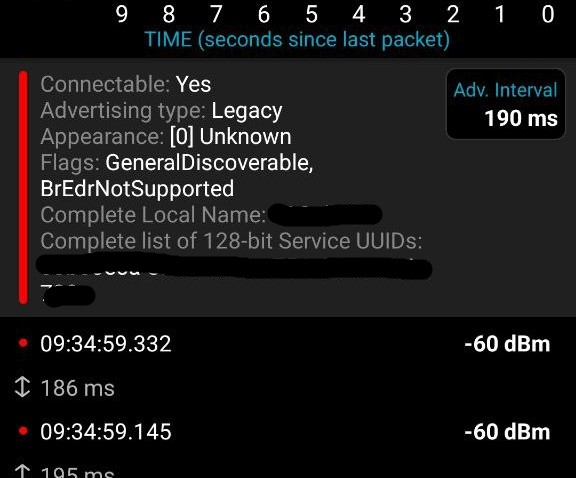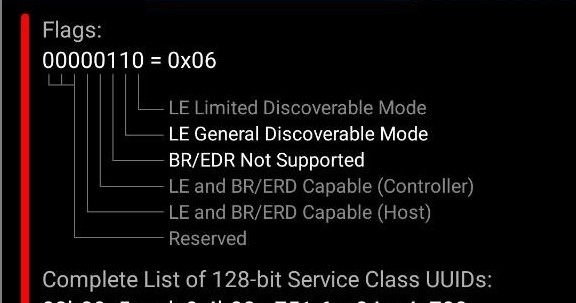Hi,
We are currently filling out the forms for BQB certification and I have some questions. We are using S132 v7.2.0 and NRF52833 for which I have already seen at infocenter that Nordic Semi doesn't provide a QDID for. Could I use the QDID that is provided for S140 v7.2.0 + NRF52833 or shall I migrate the application to use S140 v7.2.0 instead?
The BQB form requests the following information:
- Power class level, select from: Class 1 ( P >= 0dBm), Class 2 (-6dBm < P < 4dBm) and Class 3 (P < 0 dBm)
- Peak Antenna Gain: ?
- Cable Loss: ?
- Core Specification Version, select from: 4.2, 5.0, 5.1, 5.2, 5.3
- Core Configuration, select from: BR, EDR, LE, HS:
- LE Blueetooth 5 features, select from: LE 2M PHY, LE Coded Phy, Stable modulation Index TX and RX.
- LE Packet length (TX/RX):
- Direction Finding Features(5.1 BT or later):
For the Core Specification Version, I cat get it from the softdevice by running the following snippet:
uint32_t sys_get_softdevice_version(void) {
ble_version_t v;
uint32_t err = sd_ble_version_get(&v);
return err == NRF_SUCCESS ? v.version_number : 0xffffffff;
}
Which gives back 0x0000000a so the Bluetooth version is 5.1, right ?
I have connected our application to nrf connect and I can see the following information:


So from what I understand:
- We are using legacy mode for advertising.
- EDR and BR are not supported.
- We use LE general discoverable Mode.
I am trying to figure out if we are using any of the AoA direction finding and LE features introduced in Bluetooth 5, but I'll guess we don't as we use legacy mode.
How can I find out about the rest of the required information by the BQB form ?
It is the first time I go through this process so I need some guidance.
Thanks in advance,
Pablo

